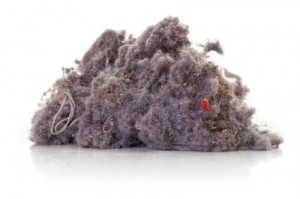 National Jewish Health and Ductworks, Inc. are collaborating for the second year during National Asthma and Allergy Month, (May) to provide a comprehensive approach for people with allergies and asthma to help them learn if the environment in their homes is contributing to their illness. National Jewish has developed a diagnostic kit to assess the allergen levels in indoor environments.
National Jewish Health and Ductworks, Inc. are collaborating for the second year during National Asthma and Allergy Month, (May) to provide a comprehensive approach for people with allergies and asthma to help them learn if the environment in their homes is contributing to their illness. National Jewish has developed a diagnostic kit to assess the allergen levels in indoor environments.
National Jewish Health and Ductworks are working together on marketing and distribution of the Family Air Care® Indoor Allergens and Mold Test Kit. The kit, developed and serviced by National Jewish Health in Denver, determines levels of common indoor allergens and mold from dust samples taken inside a home, apartment or other building. The kit is now available through Ductworks for $299.
Once the diagnostic assessment of the home is complete, users can go to the Family Air Care® Website to learn how to lower allergen levels in their homes.
“The Family Air Care® kit is the only commercially available indoor-air testing kit that lets customers compare their results with samples from homes around the nation, and offers specific advice about how to interpret the results and what to do after receiving them,” said David Tinkelman, MD, Vice President of Health Initiatives at National Jewish Health.
To use the Family Air Care® Indoor Allergens and Mold Test Kit, consumers simply attach a small capture device to their vacuum-cleaner hose, briefly run the vacuum cleaner in their homes, then mail the collection device to National Jewish Health in a pre-paid envelope provided with the kit. Test results are reported in a secure e-mail. The kits can be ordered online at www.Ductworks.com.
“The Family Air Care® assessment benefits all households, but is especially important to the 70 percent of households where a person with allergies and/or asthma lives,” said Dr. Tinkelman. “The U.S. Department of Health and Human Services recommend that people with allergies and/or asthma reduce levels of allergens and irritants in their homes to improve their health.”
National Jewish Health is known worldwide for treatment of patients with respiratory, cardiac, immune and related disorders, and for groundbreaking medical research. Founded in 1899 as a nonprofit hospital, National Jewish remains the only facility in the world dedicated exclusively to these disorders. Since 1998, U.S. News & World Report has ranked National Jewish the #1 respiratory hospital in the nation. Further information can be found by visiting www.nationaljewish.org.
Ductworks, Inc. “Your Air Duct Cleaning Expert” is a Denver-based company founded in 1990 to improve indoor air quality for homes and businesses. Their patented system of scraping and vacuuming is the most effective process for air duct cleaning. They have more technicians certified by the NADCA than any company in Colorado and provide customers with before and after photos to insure top quality performance. For more information on Ductworks and the Family Air Care Kit, go to www.ductworks.com.


 Dust is a combination of pollen, plant and mold spores, pet dander, human skin, lint, bacteria, and other contaminants. While any of these can affect breathing and allergies, dust mites can be a particular problem.
Dust is a combination of pollen, plant and mold spores, pet dander, human skin, lint, bacteria, and other contaminants. While any of these can affect breathing and allergies, dust mites can be a particular problem. Evidence has shown that the air within homes and other buildings can be more seriously polluted than the outdoor air. Several factors contribute to poor indoor air quality that can be easily controlled. Follow these simple tips improve your indoor air.
Evidence has shown that the air within homes and other buildings can be more seriously polluted than the outdoor air. Several factors contribute to poor indoor air quality that can be easily controlled. Follow these simple tips improve your indoor air. The greatest difficulty in solving indoor air quality problems is that effects on people can vary. One of a pollutant can have a completely different effect on two different people. While pollutants found in indoor air can be responsible for many harmful effects, there is considerable uncertainty as to what concentrations or periods of exposure are necessary cause specific health problems.
The greatest difficulty in solving indoor air quality problems is that effects on people can vary. One of a pollutant can have a completely different effect on two different people. While pollutants found in indoor air can be responsible for many harmful effects, there is considerable uncertainty as to what concentrations or periods of exposure are necessary cause specific health problems. While you will never be able to completely rid your home of dust. Here are 10 great tips to reduce the amount of dust and other allergy-aggravating particles from your home.
While you will never be able to completely rid your home of dust. Here are 10 great tips to reduce the amount of dust and other allergy-aggravating particles from your home. Local Air Duct Cleaning Company in Denver Post
Local Air Duct Cleaning Company in Denver Post

 Pet Dander is one of those microscopic particles found in many homes that can cause allergic reactions and trigger asthma. Here is some more information about pet dander and what you can do to reduce the amount of it in your home.
Pet Dander is one of those microscopic particles found in many homes that can cause allergic reactions and trigger asthma. Here is some more information about pet dander and what you can do to reduce the amount of it in your home.